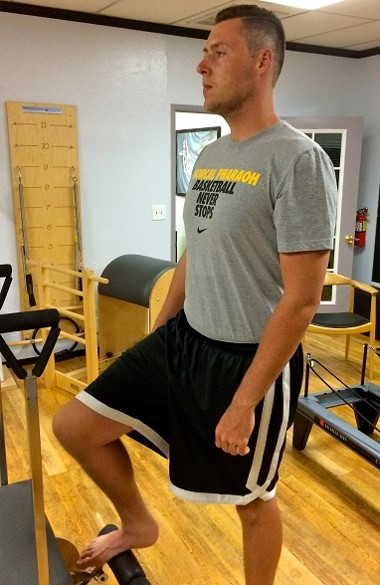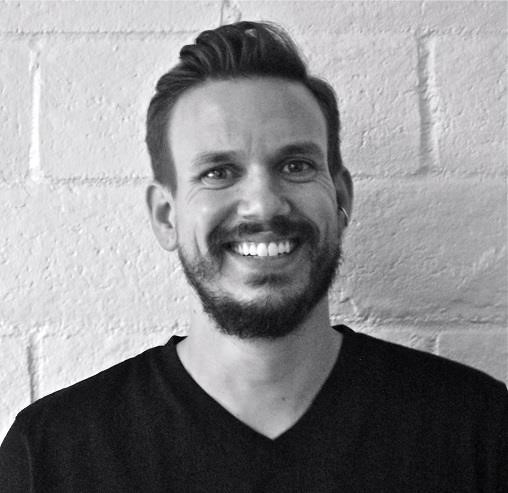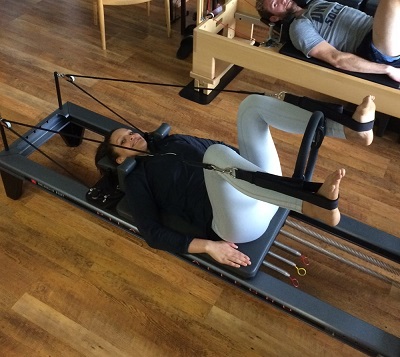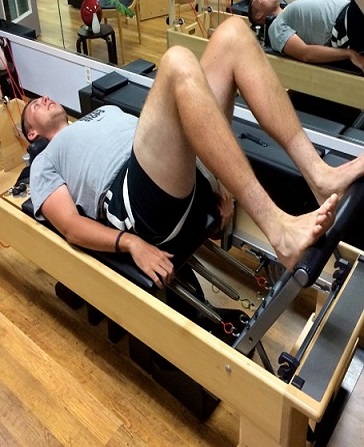(The second of an article series)
For the sake of our Pilates for Athletes discussion I thought it would be interesting to teach two young athletes who’d never experienced Pilates and then interview them before and after their first Pilates session. C.S. is a 6’9” freshmen basketball player (center / forward) at Regis University in Colorado. D.M. is a sophomore volleyball player (middle blocker) at a D1 school in Vermont. Each was given a single Pilates session. C.S.’s session was a more Contemporary style. We explored foot articulations in a number of planes of motion, Psoas hydration work, and hip mobilization and strengthening. D.M. was given a more Classical sequence on the Reformer. Here is what they had to say:
When you hear “Pilates,” what comes to mind?
C.S. – I have no idea. (laughs)
D.M. – When I heard of “Pilates” I immediately thought of Yoga. I thought it was going to be a session filled with stretching and rehab workouts where you are relaxing your body instead of working it out.
Do you know anyone who regularly practices Pilates?
C.S. – I don’t think so … No. Well, I probably do but I don’t know they do.
D.M. – My Aunt Kelli and Uncle BJ have been going for years, and have been asking me to go every time I’ve been home. When I realized I really wanted to go was at my sister’s wedding when we both were flexing and [my Aunt’s] muscles were more defined than mine. I’ve been Olympic training for a year and all she said she does is Pilates twice a week. So I knew I had to check it out.
What would you expect out of a Pilates session? How might it benefit you?
C.S. – (Looks around the studio wide-eyed) Puts you in weird positions. It’s probably going to be hard, but you’ll feel good afterwards. It’s got to be necessary if all the athletes do it.
D.M. – Prior to my first session I was expecting to do a great amount of stretching and was prepared for a relaxed workout. I’ve done Yoga before and my heart rate didn’t get up, it was all about relaxing … and I thought Pilates was going to be very similar.
What sort of injuries / pains / weaknesses / stiffness do you experience?
C.S. – Knees, ankles, and back. My only injury is an ankle injury. I fractured the top of my right ankle and have rolled it several times.
D.M. – My first season in college I was out for about a month with a stress fracture to my left ankle. Playing volleyball and being a hitter you’re swinging at over a 100 balls during practice so shoulder soreness is always present.
How do you feel after the session?
C.S. – I feel really good! My low back feels better, and I didn’t even know it was bothering me today.
D.M. – The first thing I noticed after my first session was that my abs were immediately sore, I was drenched in sweat and felt like it was the best workout I did all summer.
What will you tell people about your session?
C.S. – I feel like it’s necessary to keep playing; especially to go to upper levels.
D.M. – I recommend everyone try Pilates, it’s not what you think and it’s definitely different than Yoga. You’re in an airconditioned room yet you’re sweating like you’re in a sauna. It is a hard workout but it feels so good. It’s one hour of straight working your muscles in ways that your everyday workouts don’t really get to.
How might a regular Pilates session benefit you as an athlete?
C.S. – Help strengthen my feet and ankles. It’ll help me to jump correctly. I can’t believe how much better I feel in that short time!
D.M. – I think a regular Pilates session benefits me as an athlete because it touches the muscles in my body that regular workouts don’t normally touch. Especially for the arm workouts, I felt my shoulders getting stronger and it was working them out far more than when I swing at 100 balls. The best part about it was that my shoulders were sore, but they weren’t hurting after my Pilates workout.
What was most notable about Pilates vs. your regular workouts?
C.S. – It’s not as physically strenuous. It’s a much more centeredintense. Specific movements make a difference.
D.M. – It was a constant workout, one hour of physical exertion. Comparative to my weight lifting Pilates worked a variety of different targets in the workout. It wasn’t just arms or just legs. It was your whole body and you could feel it. Opposed to just having a leg day or just having an upper body day.
What would you want a Pilates Instructor to know before working with an athlete?
C.S. – If you’ve never played the sport know how much wear and tear we actually accumulate. Our bodies are used constantly.
D.M. – I think Pilates Instructors should know that each athlete needs to target different things in a workout. A lot of times especially with lifting, weight lifting coaches are all about
making you stronger and upping your max weight, and are
only worried about the improvement of the numbers instead
of the improvement on the athlete. Every body is different and every sport is different which means every workout should also be different.
They bring up a great point. It’s important to understand your athlete client’s needs. We wouldn’t accept a new client with a rehab need before we’d researched the condition. Athletes will always have outstanding asymmetries, commonly those asymmetries are indicative of being good at their sport. To work well with an athlete we need to be educated on the demands of the sport and how we can use Pilates to help integrate their athletic needs into all around good generic movement. Accomplished training is rarely about creating textbook posture and commonly about getting the bits and pieces to communicate more effectively. We can layer on imposed posture and contractions session after session, but a skillful trainer will help their athlete let go of and reorganize that tension revealing a more efficient and elegant mover. It took me years to understand what I was hearing in that first remark – Let go. It isn’t just about relaxing and calming, it’s about allowing yourself to venture into those vulnerable spaces that shelter our weaknesses, exploring and experiencing them, and then figuring out new ways of working with them. That’s truly the work I’ve found most valuable for my athletes.
 James Crader is a Movement Practitioner specializing in Pilates and John F. Barnes Myofascial Release Therapy, a CoreAlign Faculty Member, and owner of Evolved Body in Sacramento, CA. His work with athletes was recently featured in Mark Pedri’s Pilates documentary A Movement of Movement. Originally trained through Balanced Body, James has since gone on to study with numerous instructors both Contemporary and Classical including a mentorship program with Pilates Elder, Lolita San Miguel. James feels privileged to have been asked to teach workshops nationally, and internationally in Joseph Pilates hometown of Monchengladbach. His passion is to assist people in exploring how their bodies can move and feel better, from a re-conditioning environment to athletic performance training.
James Crader is a Movement Practitioner specializing in Pilates and John F. Barnes Myofascial Release Therapy, a CoreAlign Faculty Member, and owner of Evolved Body in Sacramento, CA. His work with athletes was recently featured in Mark Pedri’s Pilates documentary A Movement of Movement. Originally trained through Balanced Body, James has since gone on to study with numerous instructors both Contemporary and Classical including a mentorship program with Pilates Elder, Lolita San Miguel. James feels privileged to have been asked to teach workshops nationally, and internationally in Joseph Pilates hometown of Monchengladbach. His passion is to assist people in exploring how their bodies can move and feel better, from a re-conditioning environment to athletic performance training.


